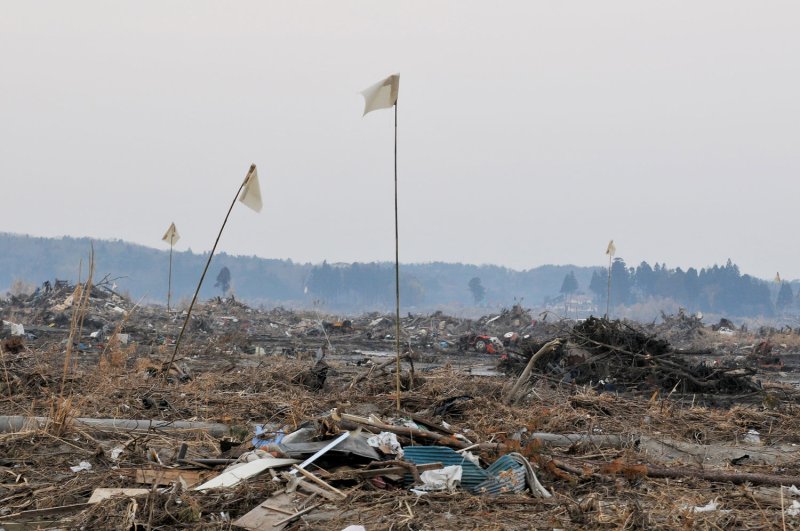1 of 4 | Japanese police wearing chemical protection suits search for victims inside the 20 kilometer radius around the Fukushima Dai-ichi nuclear power plant in Minamisoma, Fukushima prefecture, Japan, on April 15, 2011. A massive earthquake and ensuing tsunami on March 11 destroyed homes, killed thousands and caused a nuclear disaster. UPI/Keizo Mori |
License Photo
PARIS, April 20 (UPI) -- There are few energy-intensive industries in the areas of Japan hardest hit by last month's earthquake through infrastructure damage is a concern, the IEA said.
The International Energy Agency offered a mixed assessment on the impact that the magnitude-9 earthquake and subsequent tsunami had on the country's energy sector and economy.
The earthquake crippled several nuclear power plants in northern Japan, the hardest hit region. As a consequence, the country was left with an energy deficit that required additional oil and natural gas deliveries.
The IEA said, on the positive side, that much of the north of Japan is sparsely populated and doesn't have the energy-intensive industrial base prevalent in Tokyo and southern Japan.
"Effectively, under these circumstances, which for the time being underpin this report's oil demand assumptions, the earthquake would have only affected the distribution of quarterly economic growth but not the annual growth level itself," the agency said in a report.
On the other hand, Japan's economy might suffer setbacks because damage to roads, refineries and much of the power sector can't be easily fixed.
"The range of estimates stems from the difficulty of evaluating the earthquake/tsunami's indirect effects, ranging from the impact on industrial supply chains to consumer confidence and hence colors views regarding future levels of economic activity and oil demand," the report read.















